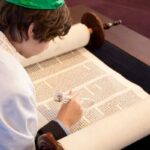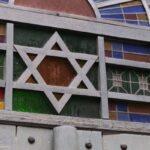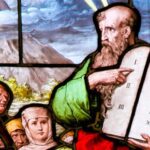We explain what the Tanaj is, what the books that make it up are and what the content and importance of each of them is.
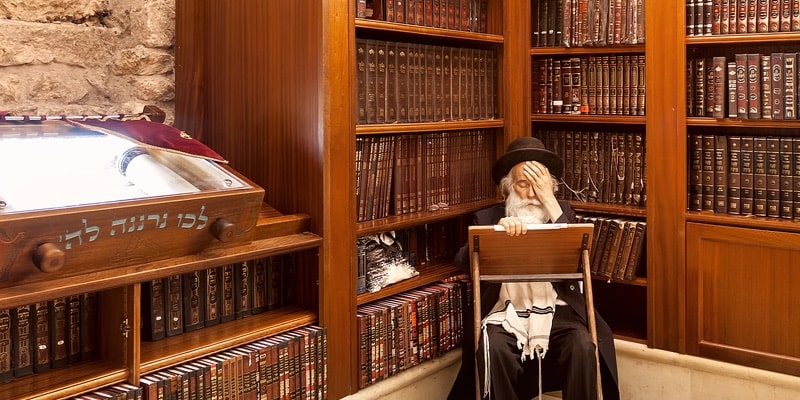
What is Tanakh?
The Tanakh, also known as the Mikra, It is one of the sacred books of Judaism, containing the twenty-four canonical volumes of laws, stories and teachings that support Jewish culture and religion. Often incorrectly referred to as “the Hebrew Bible,” the Tanakh consists of three distinct compendiums of writings, whose Hebrew initials constitute the acronym that is its name: the Torah (ta), he Nevi'im (na) and the Ketuvim (kh).
It is a complex and comprehensive religious work, which presents significant differences with the Old Testament of the Christian Bible (both Catholic and Orthodox). It is usually written in ancient Hebrew, although with passages in ancient Aramaic. There is, however, a modern Hebrew translation being carried out in the present state of Israel, known as the Tanakh Ram.
Each of the sets of texts that make up the Tanakh deals with a specific topic and is composed of a certain number of books, as follows:
Torah

Its name in Hebrew can be translated as “law.” or “instruction”, and consists of five books, equivalent to the so-called Pentateuch Christian, that is, to the first five books of the biblical Old Testament. These five books are:
- Genesis. His name in Hebrew is bereshit (“in the beginning”) and narrates the creation of the world and the first human beings, as well as their fall from grace and expulsion from earthly paradise, events that lead to the founding of the chosen people, the people of Israel.
- Exodus. His name in Hebrew is shemot (“names”) and narrates the escape of the Jewish people, subjected to slavery in the Egyptian lands, thanks to the leadership of the prophet Moses.
- Levitical. His name in Hebrew is vayikra (“and called him”) and contains the laws that God (Yahweh) dictated to his prophet Moses for the leadership of the people of Israel and for the founding of the Jewish cult and priesthood.
- Numbers. His name in Hebrew is bamidbar (“in the desert”) and recounts the journey of the Israeli tribes through the desert and then through the Moabite plains, before crossing the Jordan River towards the Promised Land of Canaan.
- Deuteronomy. His name in Hebrew is devarim (“these are the words”) and contains the sermons delivered by the prophet Moses to the Israeli people, before entering the Promised Land, as well as the transfer of command from Moses to Joshua and, finally, the death of the prophet.
Nevi'im

Its name in Hebrew means “prophets” and it is the longest book of the Tanakh, since In its content the stories of the great ancient prophets are told of the Hebrew tradition, organized into two sets: the major prophets (the first seven) and the minor prophets (the last twelve). All of its content is organized as follows:
major prophets:
- Book of Joshua. It narrates the entry of the Israeli people into the Promised Land of Canaan, guided by Joshua, political and religious heir of the prophet Moses.
- Book of Judges. It narrates the state of disorganization of the Israeli people after their arrival in Canaan, and the way in which the judges resolved specific problems and established a first jurisprudence.
- Book of Samuel. Divided into two parts (Samuel I and Samuel II), it narrates the advent and reign of the prophet Samuel, the war of the Israelis against the Philistines and the defeat of the giant Goliath at the hands of David, as well as the reigns of Saul and, later, from David himself.
- Book of Kings. Divided into two parts (Kings I and Kings II), it continues the narrative of the events begun in the book of Samuel and details the history of the kingdoms of Judah and Israel, especially during the reign of Solomon, then the fall of Samaria and of Jerusalem, and culminates with the captivity of the Jewish people in Babylon.
- Book of Isaiah. It tells the life of the prophet Isaiah, as well as the announcement of the arrival of a savior messiah, who will lead Israel to become Zion, the capital of the world.
- Book of Jeremiah. It tells the life of the prophet Jeremiah, during the end of the reign of Josiah, king and reformer of the Jewish religion, and later of Zedekiah. The book focuses on the nature of the covenant between God and the chosen people, as well as the historical situation in which Egypt, Babylon and Assyria faced each other.
- Book of Ezekiel. It recounts the seven visions that the prophet Ezekiel had during his exile in Babylon, in which he reflects on the judgment of the nations of the world and the role that the people of Israel will play among them.
minor prophets:
- Book of Hosea. It narrates the decline of the kingdom of Israel, then governed by Jeroboam II: revolts, military coups and regicides took place in a period of fifteen years of anarchy. Similarly, Hosea recounts the moral and religious error of the Israeli people.
- Book of Joel. It contains a story in two different parts: in the first, the story of the plague of locusts that destroys the kingdom of Israel, before which God himself promises order to the Jewish people in exchange for penitence and prayer. In the second, the events of the “Day of Yahweh” are announced, in which Eden will be restored and God will judge the human nations.
- Book of Amos. It tells the life of the prophet Amos, a contemporary of Hosea, Isaiah and Micah, who served King Jeroboam II and preached the true faith in the midst of a climate of growing moral and religious confusion.
- Book of Obadiah. It explains the enmity between the people of Israel and the kingdom of Edom, competitors for control of the port of Elat on the Red Sea. In the mouth of the prophet Obadiah, Yahweh's vengeance against the Edomites is prophesied, which will be fulfilled with their conquest by the Arabs.
- Book of Jonah. It recounts the events of the prophet Jonah's mission to the city of Nineveh, where he proclaimed the message of the final judgment and the destruction of the city within 40 days. The city's inhabitants repented en masse and were forgiven by God.
- Book of Micah. It narrates the life of the prophet Micah, during a period of war between the Kingdom of Israel and the Kingdom of Judah, a prelude to the invasion of the former by the Assyrians. Micah interpreted these events as God's punishment of the Israelis for their worship of other deities, and he preached the coming of the messiah who would save Israel.
- Book of Nahum. It narrates, in the mouth of the prophet Nahum, who lived 150 years after Jonah, the judgment of God on the nations, especially that of Nineveh, capital of the Assyrian Empire.
- Book of Habakkuk. It is an eminently mystical book, starring the dialogue between God and the prophet Habakkuk, as well as an oracle and a psalm authored by the prophet.
- Book of Zephaniah. It details, in the mouth of the prophet Zephaniah, the warnings of divine judgment against Judah and Jerusalem, but also against the enemies of the Hebrew people, such as the Philistines, the Syrians, the Egyptians, the Moabites or the kingdom of Kush.
- Book of Haggai. It details the speeches and proclamations of the prophet Haggai during the time of decline of the Hebrew people (the same one that Malachi will narrate almost a century later), during which they were ruled by the Persians and discouragement reigned.
- Book of Zechariah. It narrates the visions and oracles of the prophet Zechariah, who lived during the reign of Zerubbabel, a monarch imposed by the Persians.
- Book of Malachi. It contains the oracles of the prophet Malachi, during the times of the restoration of King Solomon's temple. Malachi preaches, in a time of religious disillusionment, so that the Jewish people can recover their faith, through the announcement of the end of times.
Ketuvim
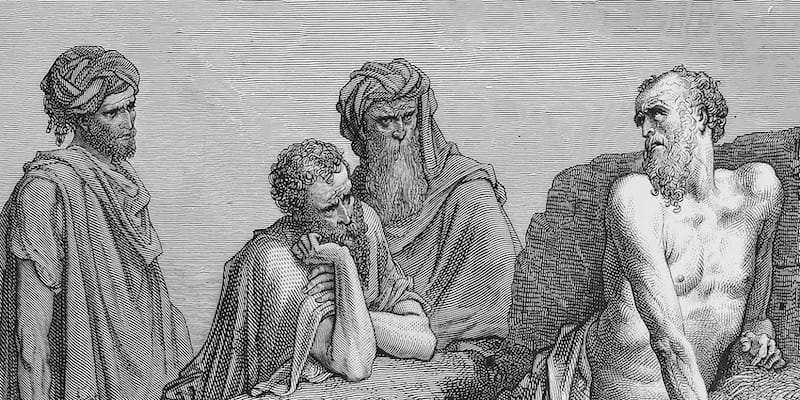
Its name in Hebrew means “writings,” and contains the writings that transmit the wisdom of the Hebrew people (the same ones contained in the Christian Old Testament) as well as other books of a historical and prophetic nature. These books are:
The books of truth or poetic books:
- Book of Psalms. It contains five volumes of religious poetry (psalms, that is, praises of God), used during the liturgy in Jerusalem during the Second Temple period.
- book of proverbs. It contains a long collection of religious, social and ethical maxims or sentences of the Israeli people.
- Book of Job. It recounts the sufferings of Job, a servant of Yahweh who is tested by God and Satan.
The five scrolls or meguinot of the Jewish holidays:
- Song of songs. Read during the Hebrew Passover, it comprises five poems and two appendices that recount the love between Shulamite and a young shepherd, forced to separate, who search for each other desperately.
- Book of Ruth. Read during the Hebrew Shavuot, it tells the family story of Elimelech, a Jewish migrant in Moab, and in particular of Ruth, his Moabite daughter-in-law, who returns to Israel to embrace the Hebrew religion and give rise to the lineage that would lead to King David.
- Book of Lamentations. Read during the Tisha B'av fast, it contains five elegiac poems mourning the destruction of Jerusalem at the hands of the Babylonian monarch Nebuchadnezzar II.
- Book of Ecclesiastes. Read during the Hebrew Sukkot, it is a book with an existential mood, which through the reflections of its narrator, Qohelet or Kohélet, teaches the foundations for a fuller life in harmony with God.
- Book of Esther. Read during the Hebrew Purim, it tells the story of Esther, a Jewish maiden who becomes queen of Persia and Media when she marries the Persian monarch Xerxes I (Ahasuerus).
The historical books:
- Book of Daniel. It tells the life of Daniel, a Jewish nobleman exiled in Babylon, to whom God reveals in apocalyptic visions the future of Israel's salvation from the hands of its enemies.
- Book of Ezra. Originally composed as a single book along with that of Nehemiah, it recounts the return of the Jewish people to the kingdom of Zion, after surviving the captivity in Babylon.
- Book of Nehemiah. It comprises an account of the restoration of Jerusalem after the Babylonian exile, from the perspective of a first person: Nehemiah, a Jewish member of the court of Artaxerxes I: the emissary appointed by the Persian Empire as governor of Jerusalem.
- Chronicles. It includes two books of chronicles (Chronicles I and Chronicles II), in which the most significant events in the history of the Jewish people are recounted as a summary, from their origins to the life of each of the Jewish kings.
Continue with: Quran
References
- “Tanach” on Wikipedia.
- “Etymology of Tanaj” in the Online Spanish Etymological Dictionary.
- “The main sources of Judaism: the Torah and the Tanach” on ORT Virtual Campus.
- “Tanakh (Jewish sacred writings)” in The Encyclopaedia Britannica.

